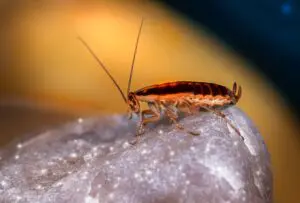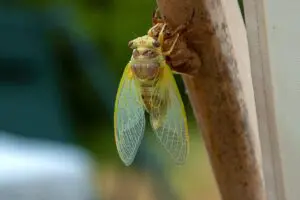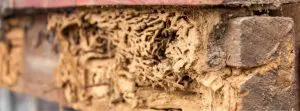
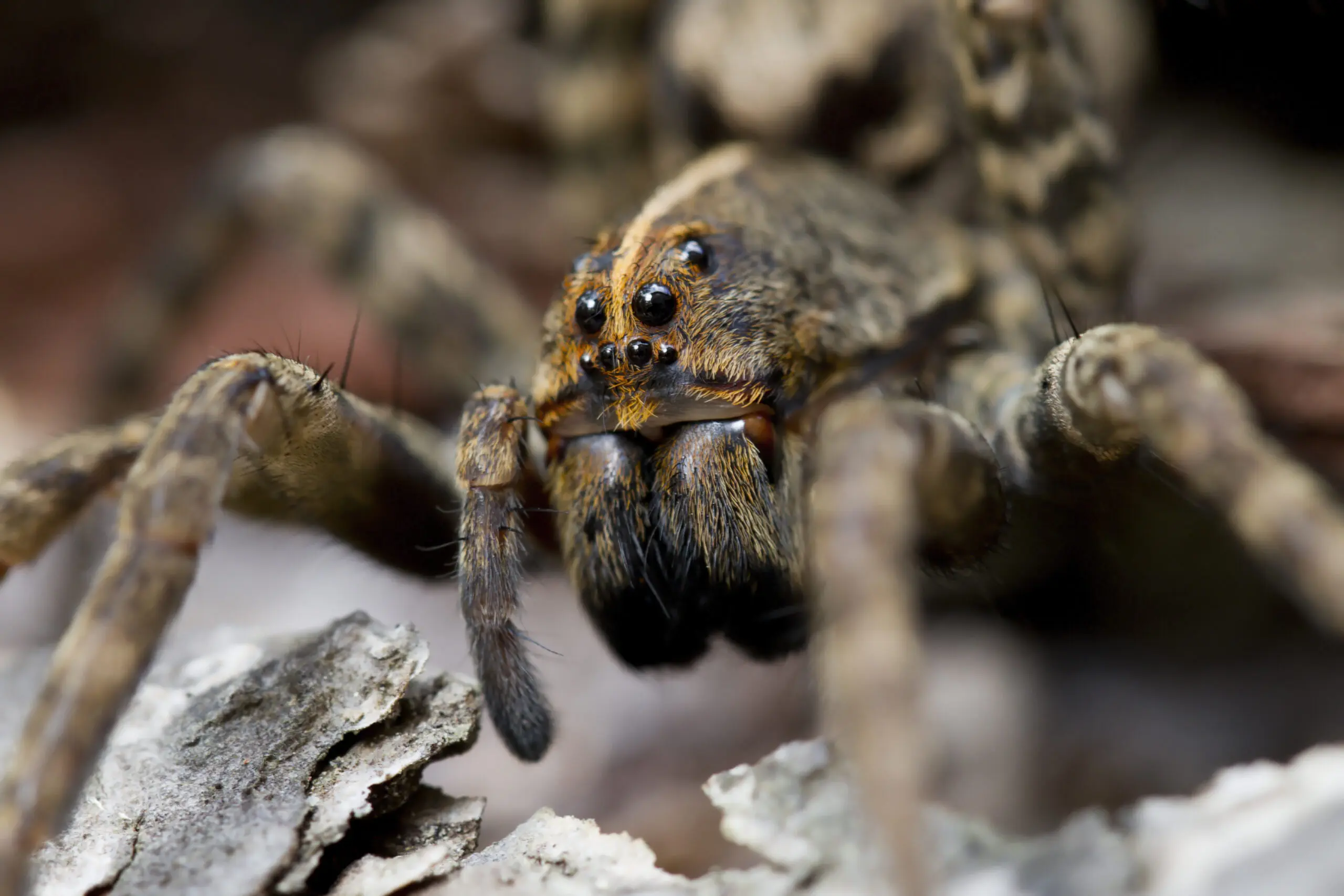
Florida is home to a wide variety of spiders, ranging from venomous predators to harmless garden dwellers. While some species are beneficial for pest control, others can be alarming to encounter indoors. This guide explores the most common spiders in Florida, including their habits, characteristics, and how to identify them.
Venomous Spiders in Florida
Brown Recluse Spiders
The Brown Recluse Spider is one of the most notorious Florida spiders. Light brown in color, this species can be identified by the violin-shaped marking on its cephalothorax. Unlike most spiders, Brown Recluses only have six eyes instead of eight, arranged in pairs.
These Florida spiders brown are considered dangerous due to their venomous bite, which can cause necrotic skin lesions. Brown Recluse Spiders are reclusive by nature, preferring to hide in dark, undisturbed areas like closets, attics, and sheds. Despite their name, they are not exclusive to Florida but are commonly found across the southeastern United States.
Alternative Names: The Brown Recluse is sometimes referred to as the Violin Spider due to its distinct marking.
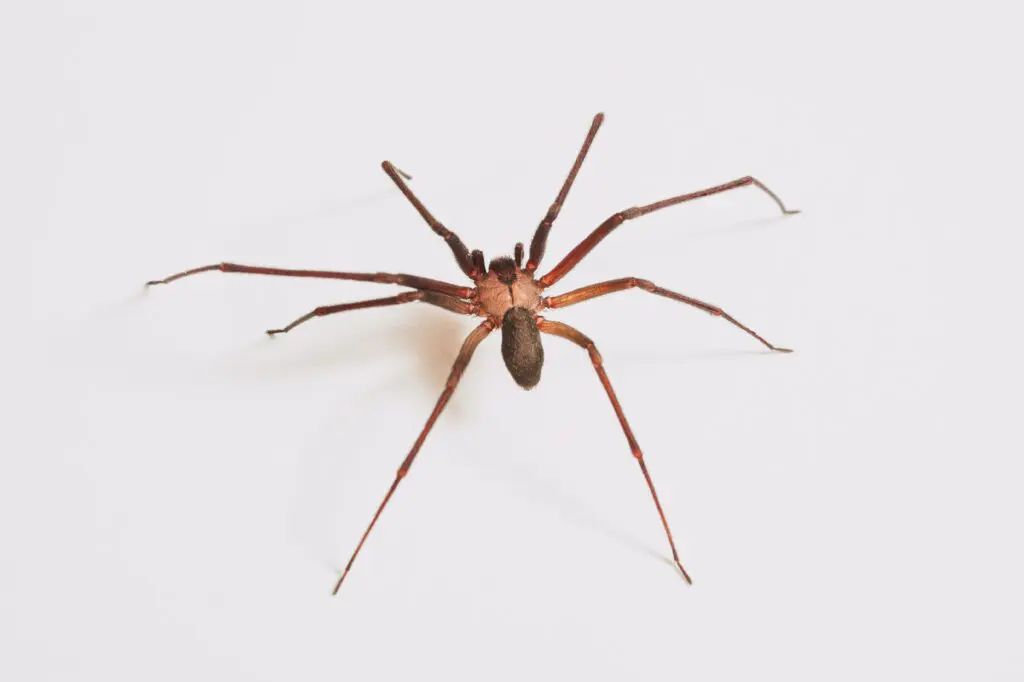
Widow Spiders
There are four types of Widow Spiders in Florida, all of which are venomous and should be avoided:
- Northern Black Widow: Recognizable by its shiny black body and two red dots on its back, this spider has a broken red hourglass shape on its abdomen.
- Southern Black Widow: Similar to the Northern species but with a connected red hourglass marking.
- Red Widow: This unique species has a bright reddish-orange cephalothorax and legs, with a black abdomen spotted in red and outlined in yellow.
- Brown Widow: Mottled brown and tan with black markings, the Brown Widow has an orange hourglass marking on its underside.
Alternative Names: The Black Spiders in Florida commonly refer to both the Northern and Southern Black Widow species.
Huntsman Spider
The Huntsman Spider is one of the largest Florida spiders brown, with a leg span of up to five inches. Despite their intimidating size, they are not venomous to humans. Huntsman Spiders are fast and agile, often seen scuttling across walls and ceilings.
While Huntsman Spiders are sometimes mistaken for the Orange Spider in Florida, they are distinct species. Huntsman Spiders prefer hiding in dark, secluded spaces and are commonly found in garages, basements, and outdoor structures.
Alternative Names: Huntsman Spiders are also known as Wood Spiders in Florida because of their preference for wooded habitats.
Non-Venomous Spiders in Florida
Arrow-shaped Micrathenas
These spiders get their name from their arrowhead-shaped abdomens. Females are brightly colored with yellow, reddish, and black patterns and have spines protruding from their abdomens. Males are smaller and lack spines.
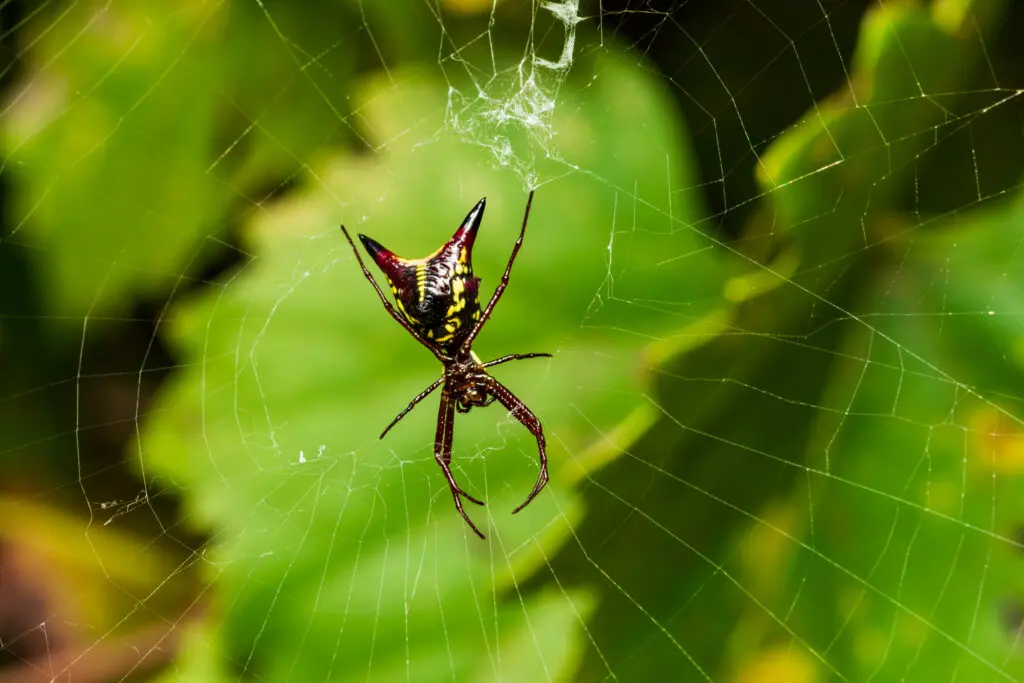
Carolina Wolf Spiders
The Wolf Spider Florida residents often encounter is the Carolina Wolf Spider, the largest wolf spider species in North America. These spiders grow to between 25 and 35 millimeters and are excellent hunters. Instead of spinning webs, they ambush their prey or dig burrows for hunting.
Alternative Names: The Jumping Wolf Spider is a common nickname for wolf spiders due to their agility and ability to pounce on prey.
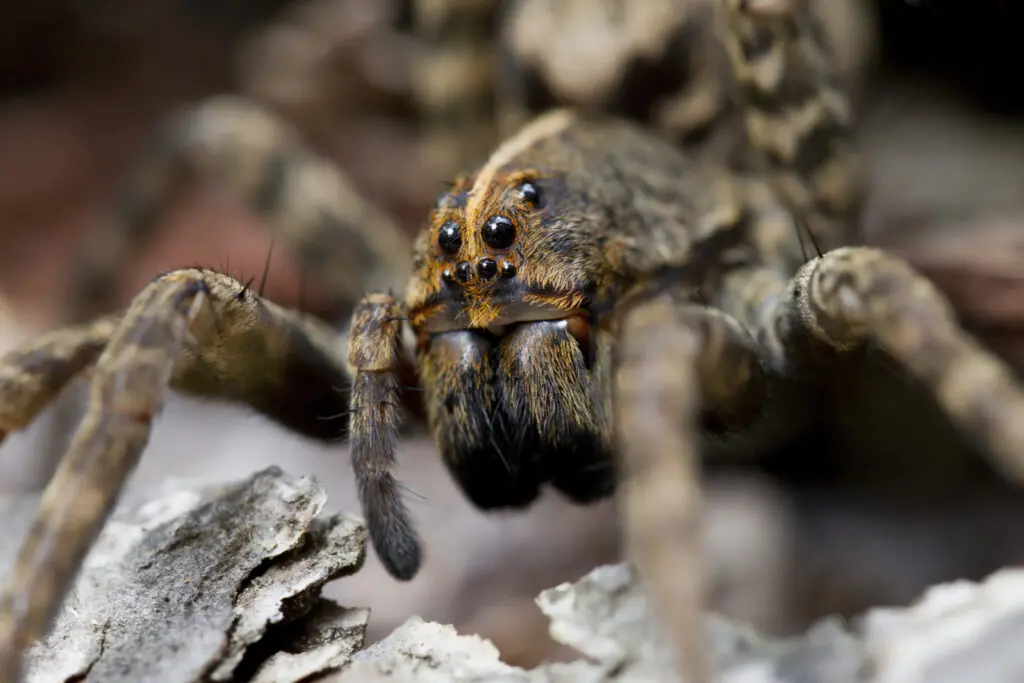
Crab Spiders
Named for their crab-like appearance, these spiders do not spin webs. Instead, they lie in wait on flowers, ambushing unsuspecting prey. Yellow Spiders in Florida, like some Crab Spiders, can change their color between white and yellow over several days to camouflage themselves on flowers.
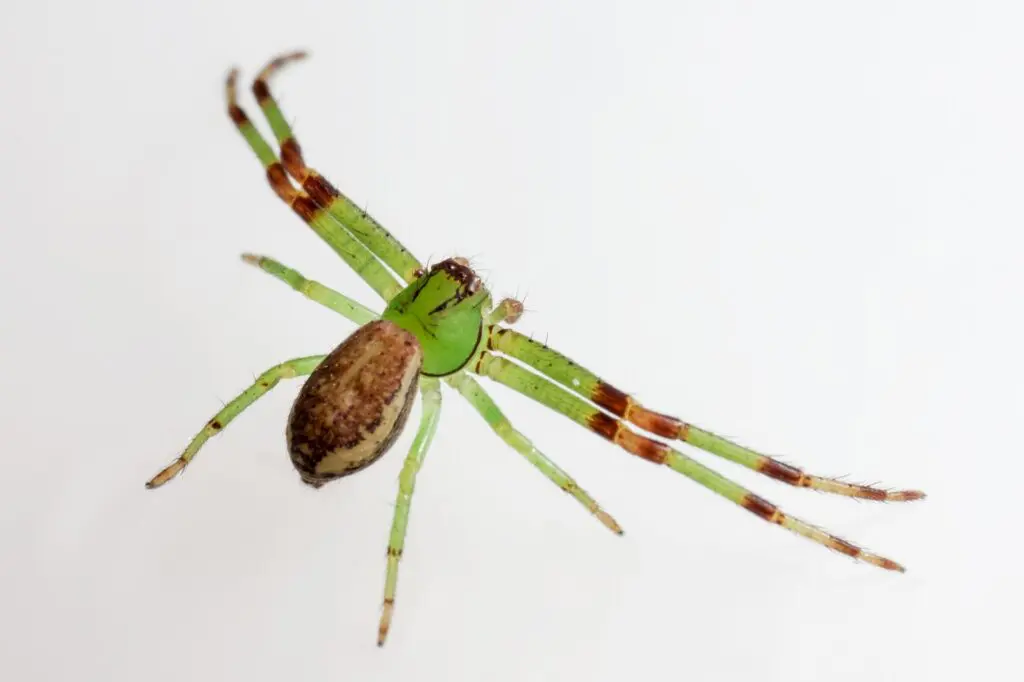
Golden Silk Orb-weavers
Known for their golden-yellow coloration, Golden Silk Orb-weavers are one of the largest orb-weaving spiders in the United States. Females can grow up to 40 millimeters long and build intricate webs reinforced with barrier webs for added protection.
Alternative Names: This species is also sometimes referred to as the Florida Garden Spider due to its frequent presence in gardens and outdoor spaces.
Green Lynx Spiders
The Green Lynx Spider is a vibrant green species with red and white markings on its body and long, spiny legs. These spiders are skilled hunters and do not spin webs, instead leaping from leaf to leaf to catch their prey. Pregnant females can change color to blend into their surroundings, a process that takes about 16 days.
Mabel Orchard Orb-weavers
These spiders are among the most colorful Florida spiders, with silvery backs and multi-colored bellies. Found from Canada to Colombia, they are beneficial for gardens and crops as they help control pest populations, including mosquitoes.
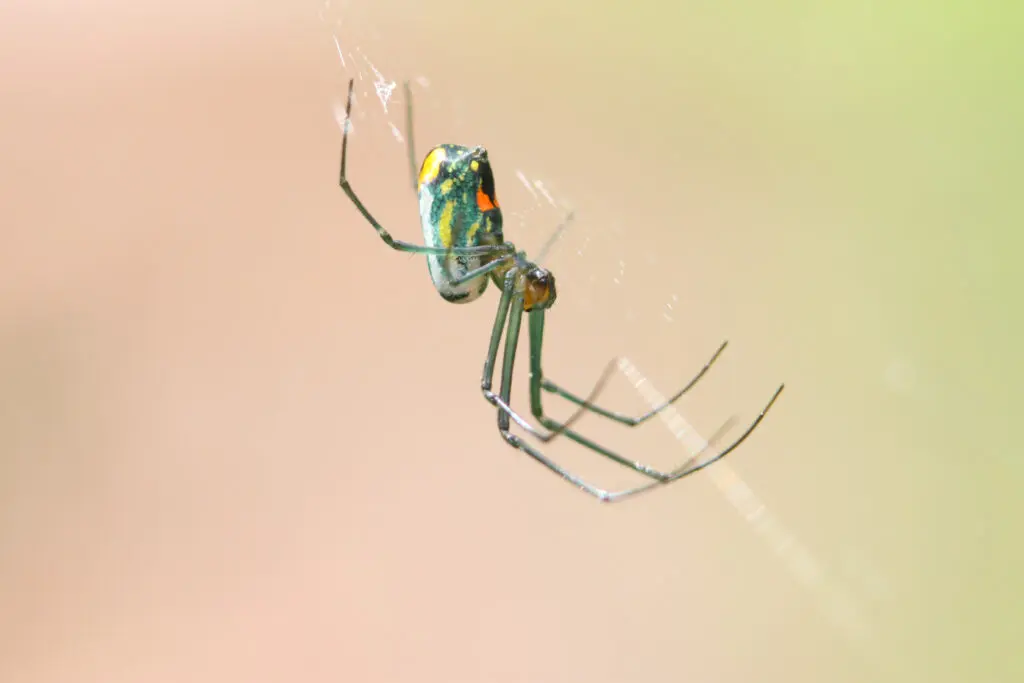
Magnolia Green Jumpers
Small but striking, Magnolia Green Jumpers are translucent green spiders with black spots on their abdomens and crowns of orange, red, white, and yellow scales. They are unique among jumping spiders for their non-hairy, slender legs.
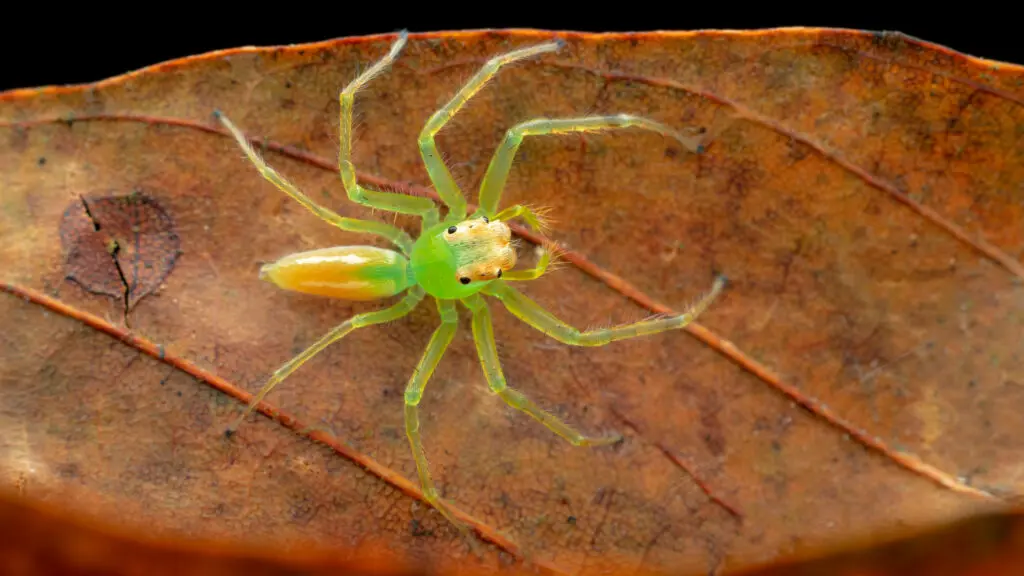
Silver Garden Spiders
The Silver Garden Spider is one of the largest common spiders in Florida, with females growing to about 1.3 inches long. Their silver bodies are adorned with black, orange, and yellow markings. Their webs are easily identifiable due to the zig-zag patterns they weave with thicker silk.
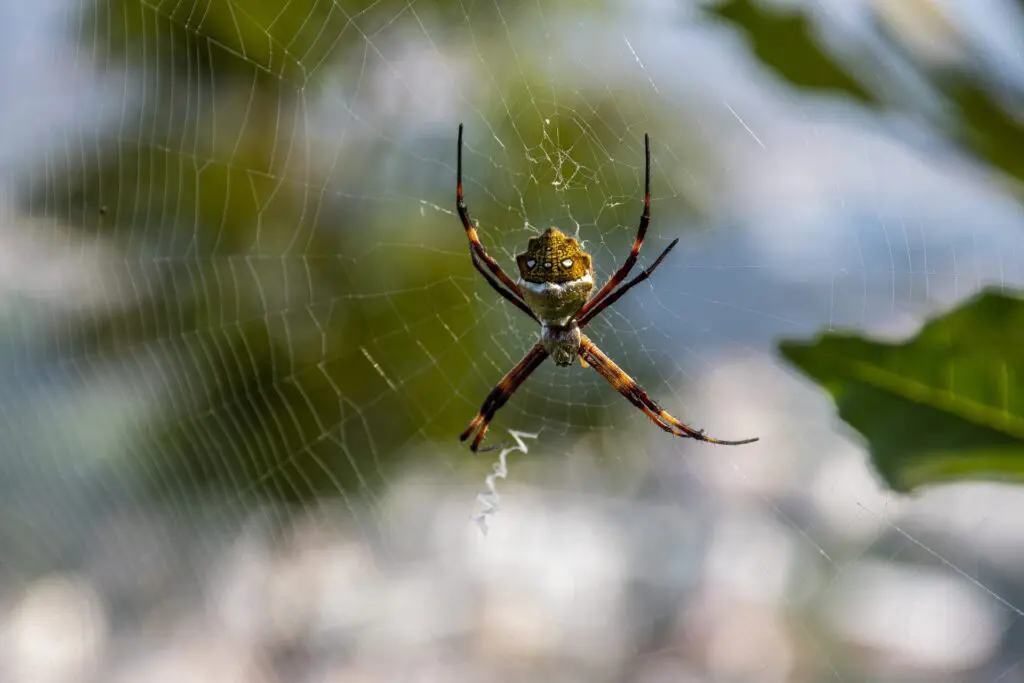
Spiny Orb Weavers
These small, brightly colored spiders are recognizable by the red spines on the edges of their bodies. They create unique webs with tufts of silk, which help prevent birds from accidentally flying into them.
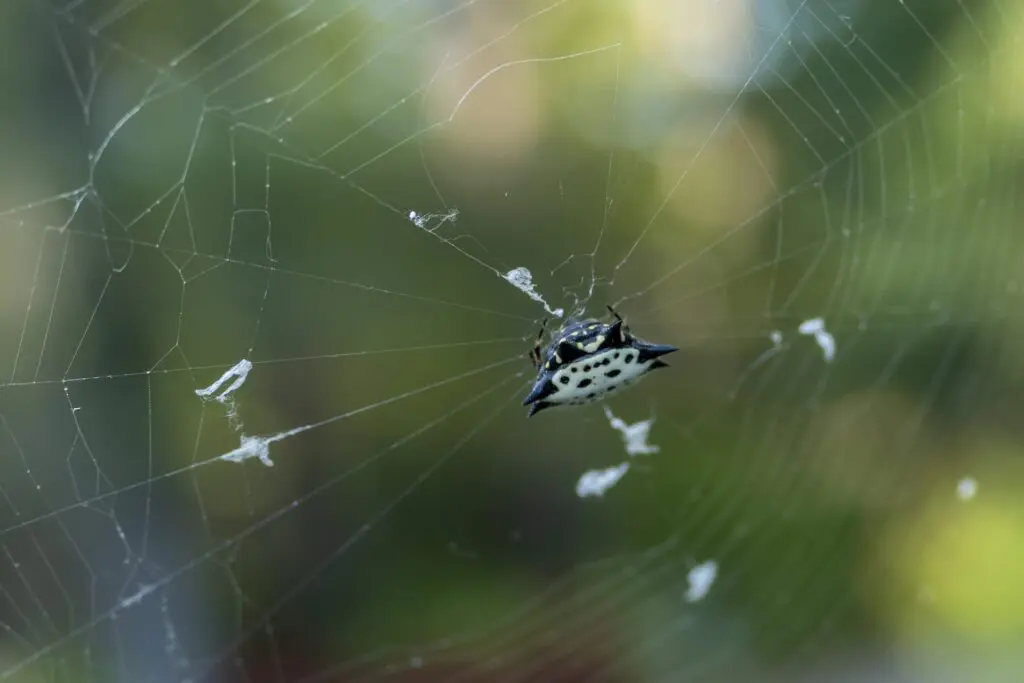
Ant Mimic Spider
The Ant Mimic Spider is a fascinating species that has evolved to look like ants. This adaptation helps them avoid predators while hunting insects. These spiders are usually dark brown or black with elongated abdomens that enhance their ant-like appearance.
Wolf Spider
The Wolf Spider is one of the most commonly found Florida spiders brown, known for their large size and hairy appearance. They are often mistaken for tarantulas but are harmless to humans. These spiders are excellent hunters and do not use webs, instead relying on their speed and camouflage to catch prey.
Frequently Asked Questions
What Are The Most Common Spiders in Florida?
The most common spiders in Florida include the Brown Recluse, Widow Spiders, Golden Silk Orb-weavers, and Wolf Spiders. For more information, refer to the Florida spider chart.
Does Florida Have Big Spiders?
Yes, Florida is home to several large spiders, including the Huntsman Spider, Wolf Spider, and Golden Silk Orb-weaver.
How Can You Tell a Poisonous Spider?
Poisonous spiders in Florida, like the Brown Recluse and Widow Spiders, can be identified by their distinctive markings. The Brown Recluse has a violin-shaped mark, while Widow Spiders feature red hourglass shapes.
Are There Poisonous Spiders in Florida?
Yes, Florida has several poisonous spider species, including the Brown Recluse and Widow Spiders. It’s important to exercise caution and seek medical attention if bitten.
Protect Your Home and Business
With so many Florida spiders, it’s essential to understand which species pose risks and how to manage them. While many spiders are beneficial for controlling pests, others can be harmful when they invade homes or businesses.
If you’re seeing more than a few spiders indoors, call Excel Pest Services. Our experienced technicians specialize in spider control and can help you reclaim your space safely and efficiently. For more information on spiders, visit our Spider Facts page and learn how to keep spiders out of your home. spiders, check out our Spider Facts and learn how to keep spiders out of your house.




